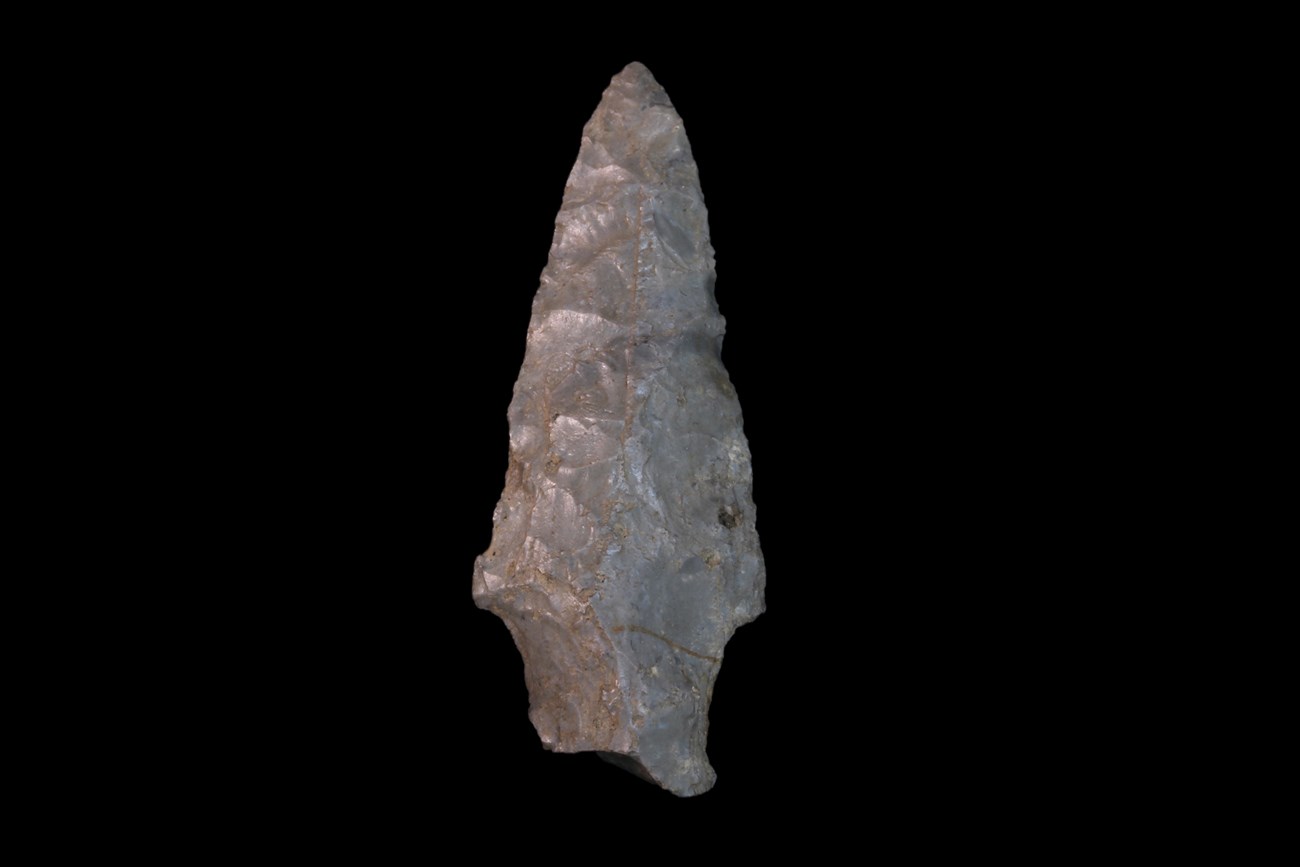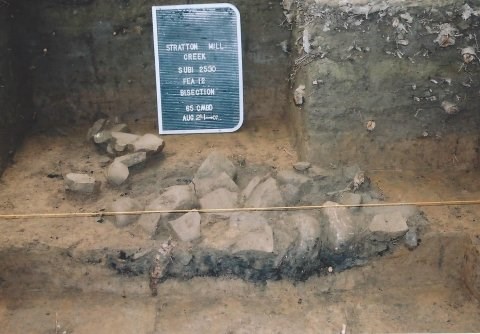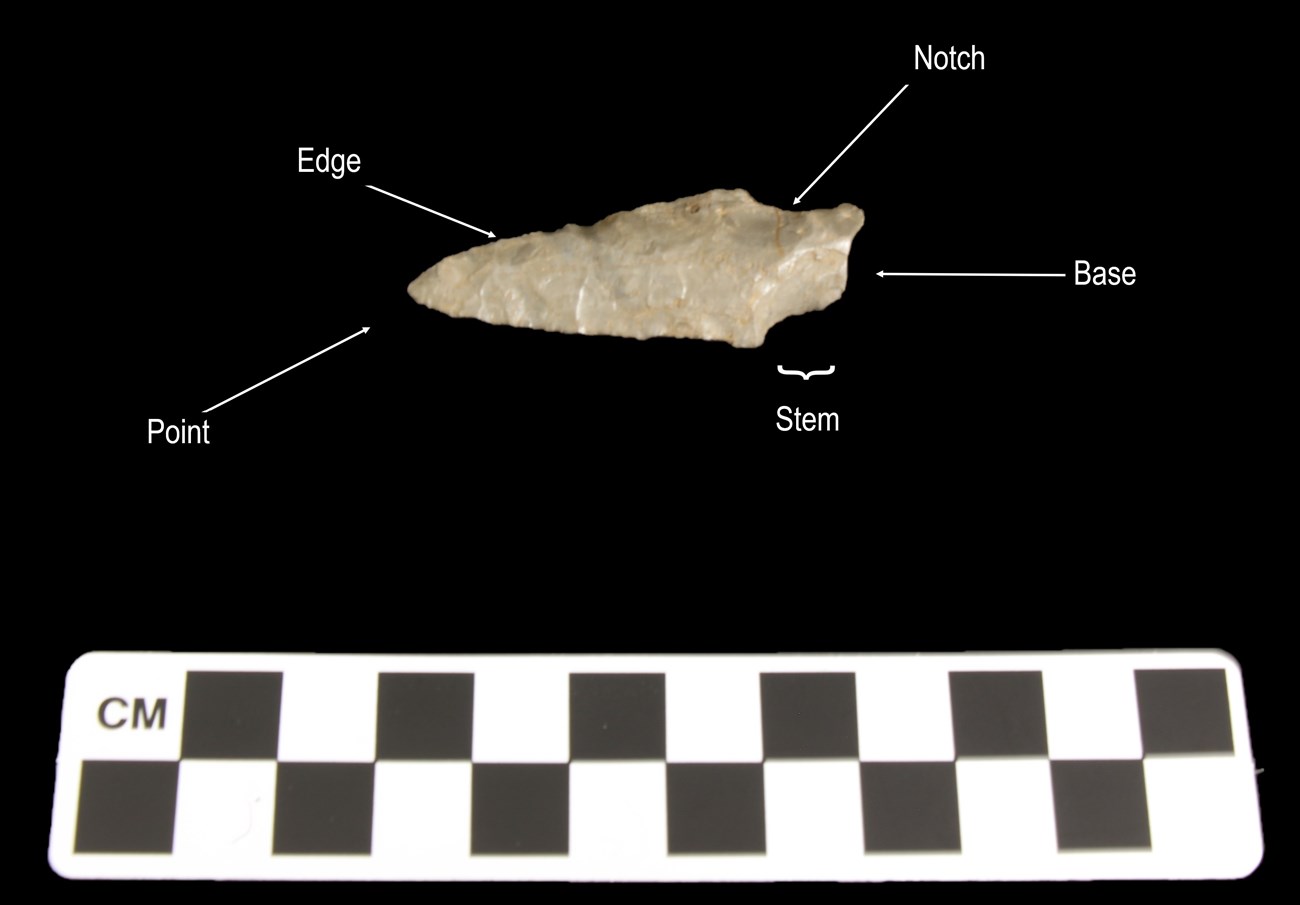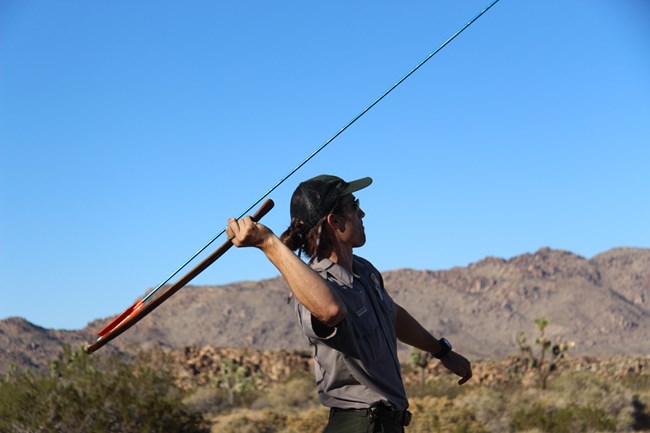Part of a series of articles titled Curious Collections of Fort Stanwix, The Oneida Carry Era.
Previous: Archaic Brewerton Projectile Point
Next: Jesuit Ring
Article
Fort Stanwix is known for its importance in the American Revolutionary War, but did you know the grounds of the fort have a history extending thousands of years beyond that? Fort Stanwix was built upon a hill that had been visited by American Indians long before the arrival of the Europeans. These prehistoric visitors left behind no written evidence, but only artifacts of their culture beneath the ground. When archaeologists excavated Fort Stanwix in the 1970’s, they discovered these sparse clues in addition to the historic fort. Compared to the half-million British and American artifacts which lie in the fort’s 18th through 20th century collections, the 444 prehistoric artifacts are easy to overlook. Though few in number, these objects illuminate nearly 5,000 years of life in pre-colonial New York.

NPS Photo
This projectile point is from the Lamoka culture of North America’s Archaic Period. The name “Lamoka” is a bit misleading. Unlike more recent histories with documentary resources, we have no written record of prehistoric peoples. What we do know comes from archaeology, the physical remains people left behind. When archaeologists find a group of similar artifacts from a specific time and place, they may identify a certain “culture” that existed in the past. The Lamoka culture is simply named as such because the largest known settlement was uncovered near Lamoka Lake in New York. Based on the geographic location of the Lamoka, it is fairly likely that they are the ancestors to the modern day Six Nations.

The Lamoka people were active throughout modern-day New York and Pennsylvania for a few centuries centered around the year 2500 BC, making this projectile point around 4,500 years old. The point itself was discovered in a stroke of luck – it was found in the remains of a prehistoric firepit that had miraculously avoided destruction during the building of Fort Stanwix and the City of Rome.
As hunter-gatherers, the Lamoka did not produce food through agriculture, but instead, gathered foods from the nearby environment by foraging and hunting.
From food remains the Lamoka left behind, we know they relied heavily on local wildlife, like white-tailed deer, black bear, and passenger pigeons. They would also eat fish like bass, perch, and sunfish, which were caught using a technique called cast-net fishing. Aside from meats, the Lamoka ate massive amounts of acorns. While we may prefer the diversity of our modern diets, the lack of carbohydrates and sugars among the Lamoka diet led to cavities being almost nonexistent – no dentist appointments necessary!*
Spending most of their years hunting and moving between seasonal camps, the Lamoka may seem as though they lived a completely different lifestyle than most of the world today. However, many modern human behaviors are linked to past. Of all the things we know about the Lamoka, one thing many of us can relate to is the relationship they had with their furry friends. The Lamoka chose to lay their beloved hunting dogs to rest through burial. Perhaps love for man’s best friend is truly timeless.

Many people would call any small, pointy stone object made by American Indians an “arrowhead.” Over the thousands of years in which people have lived in North America, however, American Indians have used such objects to tip many types of projectiles – spears, javelins, darts, and of course, arrows. It is often difficult to identify what sort of projectile was used by the shape of the stone point alone.

Some investigative work can give us a decent guess about exactly what kind of projectile point this is. Its age – around 4,500 years old – tells us it was made well before the bow and arrow became popular in Eastern North America (600-700 AD). The point is much smaller than what would be found on a hand-held spear, which means it likely would have been attached to something throwable.
Light spears would have been an especially powerful hunting tool when used with an atlatl, or spear-thrower. Atlatls were popular tools that many civilizations used around the world. Atlatls extended the arm of their user to allow for greater leverage and throwing power – physics in action!

Most sharp, stone tools that survive from prehistoric North America are made of chert, a type of rock. Certain types of chert are also known by the name flint. Some rarer materials for making tools are obsidian, argillite, or quartzite.
Chert was a prized material for tool-making because it has the property of conchoidal fracturing. This is simply a fancy way to say that, when struck, chert breaks at angles of 45 degrees or into cones. The result of this is that chert can be shaped into a variety of shapes and sizes. Prehistoric peoples used chert to make many of their sharp tools like knives, spear points, and scrapers. The process of making these tools is known as knapping. That’s right – in prehistoric America, one of your most important jobs was to knap!
The history of Fort Stanwix is often thought to have begun in the 18th century. In reality, the area has been a special place to many different people over thousands of years. Like many other places around the world, Fort Stanwix has a long, rich period of history with no written record. Artifacts are often the only surviving evidence for these extensive, mysterious lengths of time. Discovered by archeologists after 4,500 years beneath the ground, this projectile point provides but one piece of the puzzle in learning about the many people who predated Europeans at the Oneida Carry.
Learn more about archaeology in New York by visiting:
https://parks.ny.gov/shpo/archeology/
http://www.nysm.nysed.gov/research-collections/archaeology/native-american-archaeology
*Note:
According to Ritchie (46: 1994), dental problems did exist, but only related to abrasion from stone dust in grinding tools. Cavities were very rare!
See: William A. Ritchie (1994). The Archaeology of New York State. Purple Mountain Press, Fleischmanns, NY.
Part of a series of articles titled Curious Collections of Fort Stanwix, The Oneida Carry Era.
Previous: Archaic Brewerton Projectile Point
Next: Jesuit Ring
Last updated: October 18, 2022